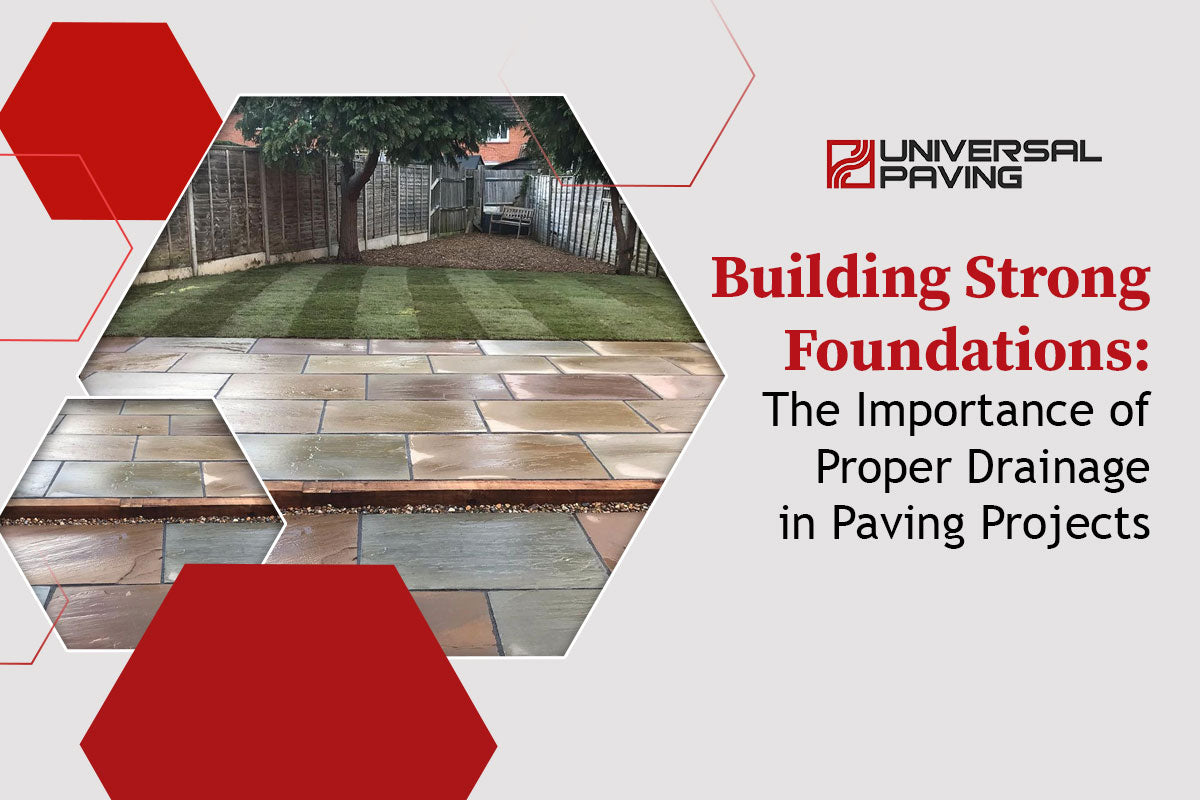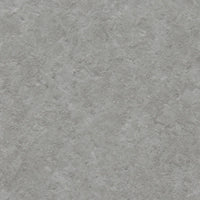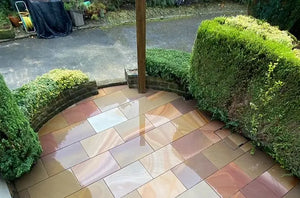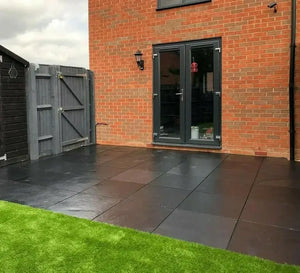
Building Strong Foundations: The Importance of Proper Drainage in Paving Projects
Proper drainage is an essential part of any paving project, as it helps to direct water away from the paved surface and prevent soil erosion. Without proper drainage, pavements can suffer from flooding, puddles and cracks due to water buildup. In addition to providing a safe walking or driving surface for people and vehicles, proper drainage also reduces the chances of damage caused by freezing temperatures in winter months. Raj Green Indian Sandstone Paving Slabs are especially popular for outdoor projects because they provide reliable protection against extreme weather conditions such as frost heave.
Types of Drainage Used in Paving Projects
Culverts and Drains:
Culverts and drains are commonly used in paving projects as they help to direct water flow away from the paved surface. These systems use a combination of pipes, channels, and catch basins to collect runoff water and safely route it away from the pavement while preventing flooding. Culverts can be constructed with concrete or metal depending on the size and weight requirements of your project; larger culvert systems may require reinforced concrete structures for added strength. Additionally, catch basins should also be installed at regular intervals along the drain line to capture debris that might otherwise clog up the system over time.
Storm Sewers:
Storm sewers are another popular drainage option for outdoor pavements, typically used when there is a need to divert large amounts of stormwater away from populated areas or where existing infrastructure cannot handle increased runoff volume. Storm sewers consist of underground networks of piping connected at various points throughout an area; these pipes then feed into larger collection tanks which subsequently discharge excess water through designated release points such as rivers and streams far removed from residential neighborhoods or other sensitive areas. The type & size of pipe required will depend on local regulations as well as estimated runoff volume - this makes it essential that contractors consult with civil engineers prior to construction in order to ensure adequate capacity!
Surface Runoff Systems:
Finally, surface runoff systems are often employed when surrounding terrain consists mostly of flat ground or slopes too gently allow for efficient drainage via gravity alone; these types of installation involve creating specially designed pathways within the soil that guide water towards predetermined endpoints (such as culverts) without compromising soil integrity along the way. This kind of installation requires precise calculations & measurements during the design phase in order to account for things like grade changes & possible erosion risk due to climate conditions - failure could so lead to costly repairs later down the line if not done correctly the first time around!
Also, Read: Drainage Importance in Paving Projects
Drainage System Installation for Paving Projects
Proper Site Analysis and Preparation:
Once the site has been properly analyzed and prepared for paving, it is time to begin laying down the paving material. Raj Green Indian Sandstone Paving Slabs are popular for outdoor projects due to their durability and aesthetic appeal. It is important to ensure that the slabs are laid in a uniform pattern with adequate width between them so that water can escape through channels cut into each slab. Additionally, a proper grade should be established throughout the installation process in order to facilitate efficient drainage away from the surface of the pavement.
Careful Laying of Paving Materials:
The next step in installing drainage systems for paving projects involves connecting drains or culverts along pathways constructed within the soil surrounding the paved area. This will direct runoff water safely away from populated areas while keeping the soil intact at the same time - this requires precise calculations & measurements during the design phase as even the slightest miscalculation could lead to costly repairs later on! Lastly, storm sewers may need to be installed if the existing infrastructure cannot handle increased runoff volume; these networks of underground pipes connected to various points throughout an area feed into larger collection tanks which subsequently discharge excess water through designated release points such as rivers & streams far removed from residential neighborhoods or other sensitive areas.
Also, Read: Enhance Your Outdoor Space with Indian Sandstone Paving
Preventive Maintenance and Troubleshooting
In order to maximize the effectiveness of a drainage system, it is important to regularly check and maintain it. This includes cleaning out any debris or buildup that may be blocking pathways, as well as ensuring proper drainage flow and elevation are maintained. If drains are not properly cared for, they can become clogged or otherwise malfunction due to excess accumulation of dirt and/or other materials. Additionally, if the installation was done improperly in the first place then there could be issues with an inadequate slope which will prevent water from running off efficiently - this must also be addressed promptly if detected!
Regular preventive maintenance should include regular visual inspections of all components within a drainage system such as gutters, downspouts, and catch basins; these checks should involve looking for signs of damage or blockages that might cause problems with future performance. Cleaning out debris on a regular basis is also key: leaves and other organic matter can quickly accumulate over time leading to decreased efficiency & potential flooding in worst cases! Furthermore, checking inlets & outlets (e.g., manholes) annually will help identify any potential issues with backflow prevention measures that may have been put into place during the installation process - failure could so lead to costly repairs later down the line due to improper functioning systems!
Finally, troubleshooting is an important part of maintaining any kind of drainage system - even one made up entirely of Raj Green Indian Sandstone Paving Slabs! If you notice standing water near paved surfaces after heavy rainfalls then it’s likely time for some investigating; this could involve anything from rooting around with shovels in search of underground pipes/culverts all way up inspecting grade changes & slopes surrounding the area and making sure everything draining away properly according to plan. In addition, using visual inspection techniques like those mentioned above its always a good idea to employ specialized tools such as cameras equipped with long poles to inspect hard-to-reach areas where obstructions might exist but cannot easily be seen by the eye alone – ultimately taking a proactive approach towards these kinds of tasks will save you a lot of money.
Also, Read: The Benefits of Concrete Pavers for Landscape Design
Conclusion
In conclusion, proper drainage is essential for any paving project in order to ensure longevity and prevent damage caused by pooling water. Culvert drains, and storm sewers are all viable solutions depending on the size of the project as well as the surrounding terrain. Additionally, surface runoff systems can be used when there are insufficient grades or slopes to allow gravity alone to efficiently move water away from paved areas. Raj Green Indian Sandstone Paving Slabs provide a durable and attractive option for these projects; however, it is important that they are properly graded with adequate spacing between them so that water can escape through channels cut into each slab. In order to maximize the effectiveness of a drainage system, regular preventive maintenance should include cleaning out debris as well as checking inlets & outlets annually so backflow prevention measures remain functional - this will save money over time! Ultimately, following best practices regarding design & installation techniques tailored specifically towards your needs while consulting with an experienced contractor will ensure success when embarking on any kind of outdoor paving project!

























































